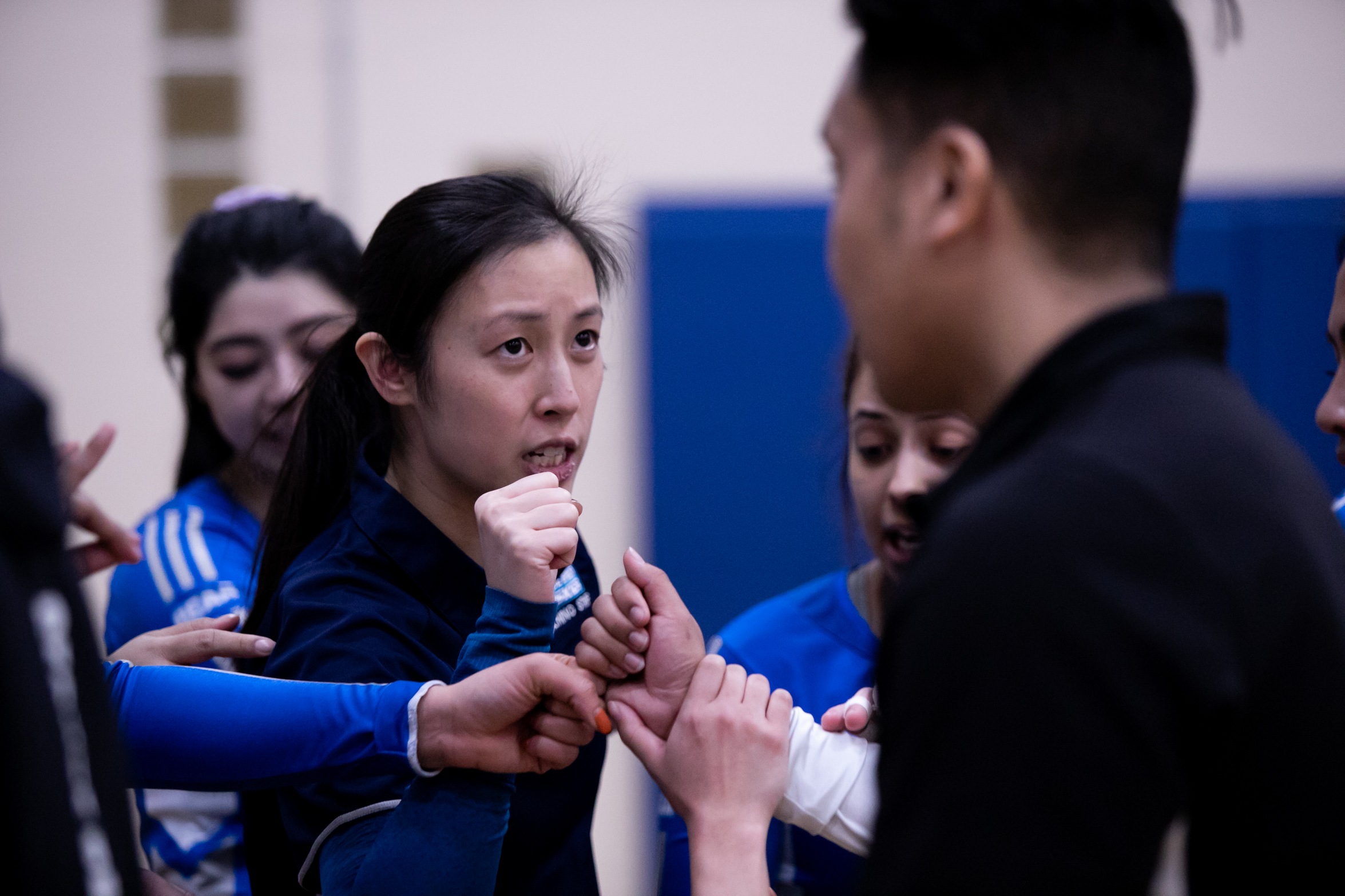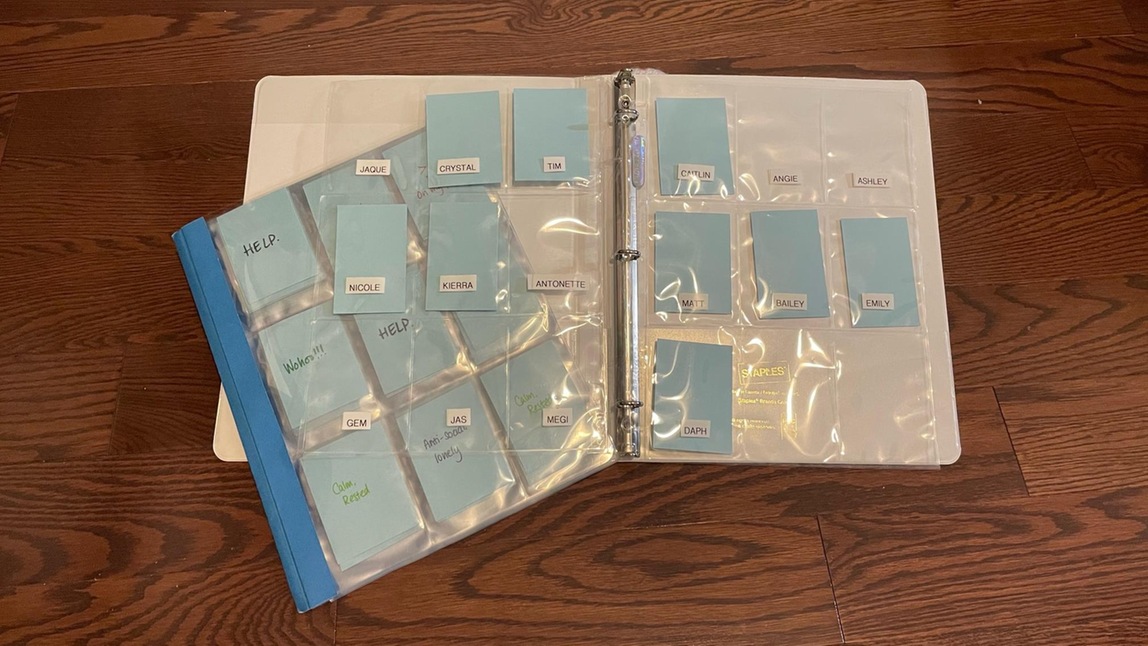Physical health plays a significant role in allowing athletes to compete at high levels. In fact, athletes rely heavily on strength and conditioning coaches, nutritionists and sometimes additional support staff to maintain their peak form. However, despite the resources available to athletes, one crucial focus that has fallen through the cracks is their mental wellness.
On a day-to-day basis, athletes at all levels endure a significant amount of physical and mental stress. Yet, despite the links between thoughts, feelings and performance, mental health considerations have historically taken a back-seat. The good news is the conversation of mental health has expanded throughout the past several years. A perfect example of this is the binder that Huskies women’s volleyball head coach, Daphne Choi, has introduced.
“I have seen something that elementary school teachers were using; basically, the kids had the option of putting a colour next to their name. It was really simply: happy, sad or angry,” Choi explained. “I got to thinking that it’s really a non-invasive way of asking someone how they are doing. I wanted to allow my athletes to do that because how they perform in practice often will be related to how they are feeling that day. Whether it’s going through health issues or having a stressful week because of school, as a coaching staff, it’s always been our goal to be transparent with our athletes. We want them to be comfortable being transparent with us about anything. Along the lines of creating that transparency and trust, we want our athletes to feel safe in how they are feeling.”
Choi believes that introducing the binder to the team was made easier by the recent shift on social media of the mental wellness conversation over the past five to ten years. She was impressed by the continuous buy-in on this topic, especially among student-athletes.
“When I first introduced the binder to the team and explained what it was about, they nodded and listened,” she said. “But when I put it down, from day one they all rushed to want to go fill it in. They prioritize that in their warmup. They will make it a point to go fill it out.”
Essentially, the binder is a personalized space for the student-athletes to express themselves. They’re allowed to take a blank card and put whatever they want on it. Then the card is placed in the binder face-down, so no one else knows, and no one flips over any cards to see anyone else’s. Each assistant coach is responsible for checking out the cards of their four assigned athletes. If they see something that requires attention, they can either address it right away, talk to Choi or tuck it away and see if there’s a pattern moving forward that repeatedly signals that a student-athlete is struggling.
“It doesn’t mean if you put something down that you’re going to get a talking-to right away. What it does mean, is it’s an invitation to talk,” she said. “We don’t track or record it, but we remember on a personal level. It’s totally up to the individual if they want to pursue anything further, but because of this, we are not surprised by anything that could come up. It’s a lot easier to mitigate stressful and risky situations from the get-go with this, as opposed to the athlete reaching a boiling point and it’s a much bigger ordeal [that is] harder for us to manage as a team.”
 The key to Choi’s approach is creating a comfortable and non-judgmental environment that allows student-athletes to feel safe. She and the other coaches have found the student-athletes tell them everything from how work is going to how life is going. They also share with the coaches when they are in a great mental state. Overall, it’s been a positive experience for the coaching staff and athletes, and even the assistant coaches take part.
The key to Choi’s approach is creating a comfortable and non-judgmental environment that allows student-athletes to feel safe. She and the other coaches have found the student-athletes tell them everything from how work is going to how life is going. They also share with the coaches when they are in a great mental state. Overall, it’s been a positive experience for the coaching staff and athletes, and even the assistant coaches take part.
“As a coaching staff we really support each other. We all [have] the same struggles our athletes go through, and we have done a good job of keeping in check with each other, and making sure we are setting that example of reaching out to each other and being open and honest. So therefore, we work very well together as a team and help build a strong culture,’ she explained.
Choi adjusts her coaching style depending on what the student-athletes write down.
“Depending on how the student-athletes are feeling that day, I adjust my coaching style,” she said. “For instance, if they are feeling overwhelmed and exhausted, maybe that practice isn’t the best day to nitpick on something small and give them more stress. Maybe it’s an indicator for me to change the practice to make it about teamwork, support, and having drills to remind us that volleyball is fun.”
The student-athletes on the women’s volleyball team truly seen how the binder has helped them in their athletics and everyday life.
Athletes’ thoughts
“The binder allows me to take a moment to self-reflect on how I'm feeling at the moment and creates an initial line of communication. Instead of suffering in silence and being self-isolated with my loud thoughts and feelings, I gained a sense of relief,” fourth-year setter, Jasmin Walia said. “Initially, I thought that because I’m an independent person, that this was another challenge in my life that I have yet to overcome on my own, and that doing so would make me a ‘strong’ person. The binder is more than a crack that opens the barriers of stigmas within mental health, it’s a gateway that has allowed me to create an easier road for myself to openly discuss my mental health.”
“The daily practice binder really helps me reflect and understand my feelings. I am the type of person who has a hard time expressing what I am thinking right way,” team captain, Angelique Agustin said. “However, the binder helps me narrow down my emotions and thoughts, and allows me to understand how I feel in the moment and then look back and explain why I felt that way, and be able to gather my thoughts more clearly.”
 “This allows us as athletes to feel comfortable with sharing how we feel with our coaches, and it allows our coaches to understand why we are acting or behaving a certain way during practice. The binder has helped me feel more relaxed at practice, knowing that there isn’t immense pressure from the coaches to always be performing well or the same every practice. The binder helps us communicate with our coaches and it tells them we are giving whatever our 100% is for that day,” third-year outside hitter, Ashley Lau, explained. “School can be stressful, but the binder has helped me place that stress elsewhere. Sometimes, I would write how I feel at the beginning of that practice and never have to think about it again because I have let it out of my system. Sometimes I would like to talk to someone about how I am feeling but never know how to approach the topic, so with the binder, it makes it easier to start those necessary conversations.
“This allows us as athletes to feel comfortable with sharing how we feel with our coaches, and it allows our coaches to understand why we are acting or behaving a certain way during practice. The binder has helped me feel more relaxed at practice, knowing that there isn’t immense pressure from the coaches to always be performing well or the same every practice. The binder helps us communicate with our coaches and it tells them we are giving whatever our 100% is for that day,” third-year outside hitter, Ashley Lau, explained. “School can be stressful, but the binder has helped me place that stress elsewhere. Sometimes, I would write how I feel at the beginning of that practice and never have to think about it again because I have let it out of my system. Sometimes I would like to talk to someone about how I am feeling but never know how to approach the topic, so with the binder, it makes it easier to start those necessary conversations.
“The binder has helped with my mental wellness because it gives me the chance to let someone know how I’m really feeling, despite how I may present myself. When I get into the gym, I try to leave whatever I’m dealing with outside of volleyball at the door so I can focus on what’s needed of me on the court,” second-year middle blocker, Crystal Nguyen, stated. “Sometimes, I let these stressors build up too high, so if I’m just honest with what I put in the binder, I know that my assistant coach will be there to talk with me about it afterwards. The binder is a simple way to give the coaches a heads up on how we may approach practice that day, and it also allows them to adjust their coaching method towards us if necessary.”
The six-year head coach made sure to set this type of foundation from the start. This ultimately led to the program continuing to succeed year-in and year-out, and more importantly, make history.
“For our program, we have tried to make it a point from the get-go that we don’t leave anyone behind. We will do everything we can to make the right culture and help the program succeed,” she explained. “At the beginning of my career at George Brown, I had to start that culture […] from scratch. I think it was extremely important that we set that tone from my first year, and it has been building and building. As we succeed more, you kind of start thinking that maybe [the culture] is why we are so successful as a team. Therefore, it’s really easy to get buy-in and create that relationship with athletes that extends beyond teaching them volleyball technical skills.”
The goal with Bell Let’s Talk and continuing the conversations surrounding mental wellness is to continue to take steps in the right direction.
“The hope is that we teach mental awareness and resiliency and normalize reaching out for help so that student-athletes see themselves facing and overcoming obstacles. These are skills athletes will take beyond their time as a student [into] their careers and personal lives,” coach Choi explained.





























